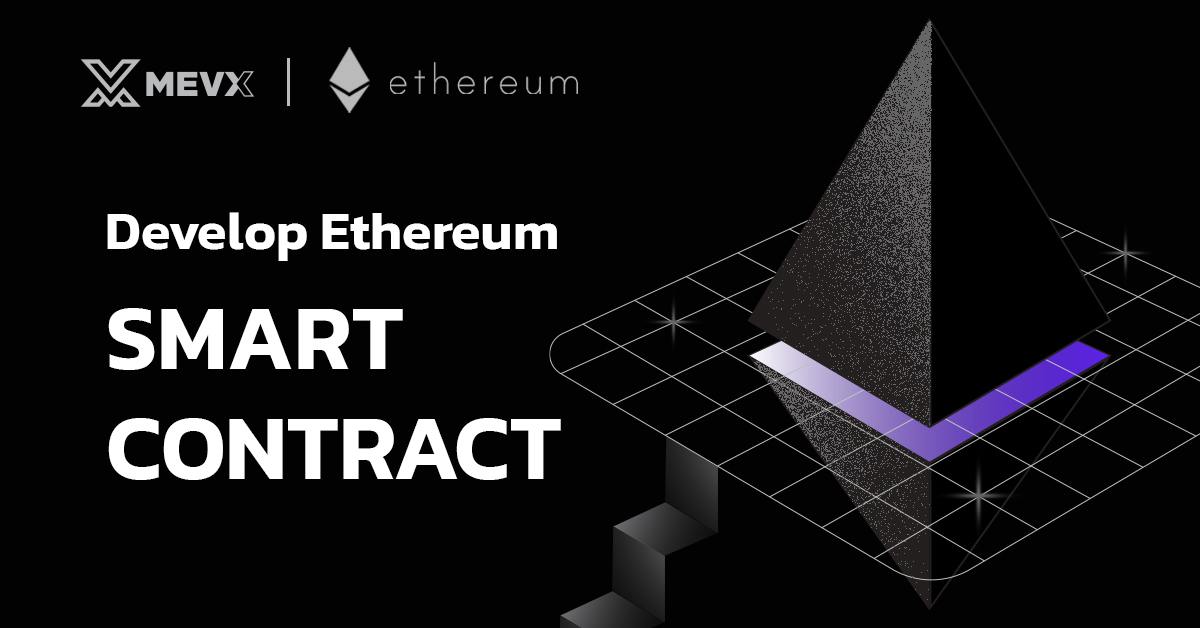Main Takeaways
- What you need in preparation for writing an Ethereum smart contract.
- This article is a step-by-step guide on how to build a smart contract on Ethereum.
- We also discuss how to test and optimize your smart contract.

Develop an Ethereum smart contract
Introduction
Smart contracts are contracts that are executed automatically without the need for an intermediary. They are revolutionary due to their convenience and transparency. Once a smart contract is deployed, no entity can interfere with or adjust the lying code, making it more trustworthy than the traditional concepts of a contract. In this guide, we will walk you through the process of creating and deploying a basic Ethereum smart contract. We use Solidity, the primary programming language of Ethereum.
If you want to know more about smart contracts on Ethereum, check out our “What are Smart Contracts? Their Roles in the Ethereum Ecosystem” article.
What You’ll Need
- Remix IDE: An online development environment for writing and deploying Solidity code.
- Metamask: A browser wallet for interacting with the Ethereum blockchain. You can check out our Guide to setting up a Metamask wallet.
- Ethereum Testnet: A testing environment like Ropsten where you can get free test Ether.
- Basic Programming Knowledge: You need to have a basic understanding of concepts like functions and variables.
Step-by-Step Guide
After finishing the preparation, you will need to set up the environment to write your smart contract. Follow the guide below to start.
Step 1: Setting Up the Environment
Switch to Test Network on Metamask
- Setting up your Metamask wallet.
- Switch to a test network like Ropsten Test Network by accessing the network dropdown in Metamask.
Obtain Test Ether
- Use a Ropsten Faucet (e.g., faucet.egorfine.com) to request the free test Ether.
- Paste your Metamask address into the faucet, and the funds will be sent for use in testing.
Step 2: Writing Your First Smart Contract
Access Remix IDE
- Open Remix IDE in your browser.
- Create a new file under the File Explorer panel and name it SimpleStorage.sol.
Write Your Solidity Code
Here’s a basic example of a smart contract:
// SPDX-License-Identifier: MIT
pragma solidity ^0.8.0;
contract SimpleStorage {
uint256 storedData; // A variable to store a number
function set(uint256 x) public {
storedData = x; // Store the input number
}
function get() public view returns (uint256) {
return storedData; // Retrieve the stored number
}
}
Code Breakdown:
- pragma solidity ^0.8.0: Specifies the Solidity compiler version.
- contract SimpleStorage: Declares the smart contract.
- uint256 storedData: A state variable for storing data on-chain.
- function set(uint256 x): A function to update the value of storedData.
- function get(): A read-only function to retrieve the stored value.
Step 3: Compiling the Contract
In Remix, click the Solidity Compiler tab.
Select the appropriate Solidity version (e.g., 0.8.0) and click Compile SimpleStorage.sol.
Ensure there are no compilation errors; if any, debug and fix them.
Step 4: Deploying the Contract
Connect to the Ethereum Test Network
- Open the Deploy & Run Transactions tab in Remix.
- Select Injected Provider – Metamask from the Environment dropdown.
- Authorize Metamask to connect to Remix and ensure you’re on the correct test network.
Deploy the Contract
- Click the Deploy button.
- Confirm the transaction in Metamask.
- After deployment, your contract’s address will appear in Remix.
Step 5: Interacting with the Smart Contract
Use the set Function
Under Deployed Contracts, expand the SimpleStorage section.
Enter a value (e.g., 42) into the set field and click Transact.
Confirm the transaction in Metamask.
Use the get Function
Click the get button in Remix.
The stored value (e.g., 42) will be displayed, fetched directly from the blockchain.
Test and Optimize Your Smart Contract
Monitor Transactions on Etherscan
Paste your contract’s address into a block explorer like Ropsten Etherscan to view deployment and interaction records.
Gas Optimization
When transitioning to mainnet, ensure efficient code practices by:
- Avoiding redundant computations.
- Consolidating multiple operations.
- Using smaller variable types when appropriate.
Next Steps
With this foundational knowledge, you can now experiment with more advanced functionalities like creating ERC-20 tokens, building decentralized applications (dApps), or implementing DeFi protocols. Ethereum smart contracts offer endless possibilities, and this guide is your first step into this exciting world.
Share on Social Media:
